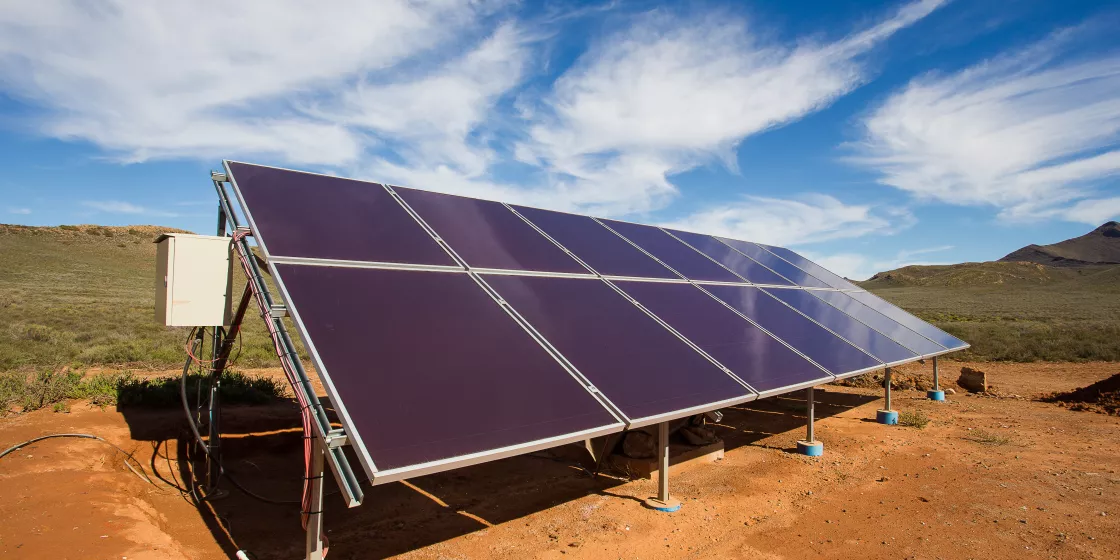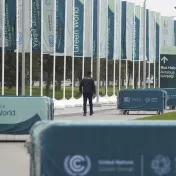Climate and development finance are often conceptually separated, even though they are two sides of the same coin. In the third part of our blog series on the Fourth UN Conference on Financing for Development (FfD4) in Seville, we explore why the original promise of ‘new and additional’ climate finance has been broken and how we can ensure that Seville does not become a setback in global climate and development policy.
‘Is this a climate project or a development project?’ – This seemingly harmless question reveals a structural problem of the international financial architecture: the misconception that the climate crisis and development goals can be neatly separated. As if there were projects for climate protection and others for poverty reduction. As if a solar power plant in a country with limited access to electricity would not automatically represent a development opportunity. Or as if constructing solid school buildings that can withstand extreme weather and serve as shelters in emergencies would not simultaneously guarantee education and prepare people for the climate crisis.
In reality, climate and development finance are closely intertwined. They are two sides of the same coin – yet they still compete for the same scarce public funds.
‘New and Additional’ – a Promise with an Expiry Date?
When the UN Framework Convention on Climate Change (UNFCCC) was adopted in the 1990s, it stipulated that climate finance for the Global South is to be provided from new funds that are paid in addition to traditional development finance (ODA). This was the industrialised countries’ central promise – as the main historical contributors to the climate crisis. The principle of ‘new and additional’ was for the first time explicitly enshrined in Article 4.3 of the Convention: climate finance must not come at the expense of existing commitments to development finance, but needs to be provided on top. Today, the reality looks different: a large part of public climate finance simply counts as ODA. New funds? Not a chance. Development and climate finance need to be linked. Therefore, the problem is not that climate finance is generally considered part of ODA – but that it is not provided in addition to the 0.7% of gross national income for development cooperation pledged by industrialised countries.
The result is an increasingly chaotic financing landscape: the need to significantly increase climate finance meets growing financing needs in development policy. For example, the World Bank – as a key player in international development cooperation – has formulated ambitious climate goals. This was an important step that was backed by the German government. At the same time, however, pressure on existing funds is increasing: in particularly poor countries, which are supported by the World Bank’s International Development Association (IDA), conflicts of interest are looming on the horizon – for instance, when funds are channelled into climate protection projects that would otherwise have been invested in education, health, or social security.
It is therefore crucial to increase funds and to utilise the synergies between climate and development goals. Today, development projects must be both climate-resilient and low-emission – while conversely, climate investments should be effective in terms of development policy.
Mainstreaming is Not Enough
The dilemma is also evident in Germany: the majority of international climate finance comes from the budget of the Ministry for Economic Cooperation and Development (BMZ). Climate protection is often taken into consideration there, for example through so-called mainstreaming into traditional development projects – a sensible and important approach. But this is not enough. In addition to integrated climate protection, targeted climate projects are needed that not only take into account the goals of the Paris Agreement, but actively contribute to achieving them.
FfD4: Don’t Let Climate Finance Fall by the Wayside!
This is precisely why FfD4 in Seville is so important. It is the only inclusive forum where all UN member states come together to discuss and take decisions on reforms to the global architecture of development finance. Moreover, it offers a historic opportunity to make the financing of sustainable development more coherent – in other words, to not only mention the link between climate and development goals, but to develop binding regulations.
However, what has leaked so far from the negotiation process gives little cause for optimism. Shortly before the conference, it remains unclear whether the following key points will make it into the final document:
- An explicit mention of the new climate finance goal, the UNFCCC, or its principles such as the Common But Differentiated Responsibilities between countries
- A commitment to new and additional climate finance
- A pledge to strengthen the UNFCCC climate funds
Political Dynamics in the FfD4 Negotiation Process: Challenges and a Dilemma
The negotiations on climate finance at FfD4 reflect a complex web of interests and power relations. Some industrialised countries – above all the USA, which has withdrawn from the Paris Climate Agreement and does not recognise international obligations in the field of climate finance – are preventing more binding formulations. They want to minimise financial and political obligations at the international level.
At the same time, many countries in the Global South are facing a particular challenge: they are not only severely affected by the climate crisis but also in urgent need of additional support. However, they often lack a unified negotiating position. Many fear that in times of scarce public funds, a stronger focus on climate finance could lead to displacement effects – i.e. fewer funds for education, health, or social security. This complex situation makes it difficult to integrate climate finance clearly and effectively into the FfD4 outcome document – and underlines the urgency of actually providing additional funds and creating more coherence between climate and development finance.
What Needs to Happen Now
For Seville not to become a setback in global climate and development policy, four concrete steps are necessary:
- A clear commitment to additional climate finance: Development and climate protection must not be played off against each other. ‘New and additional’ has to mean more funds overall, not just a new label.
- Anchoring UN climate principles in the final text of FfD4: This is the only way to ensure that the link between climate and development finance remains coherent. The principle of Common But Differentiated Responsibilities, which is enshrined in the UNFCCC and Paris Agreement, must be upheld so that wealthy countries contribute their fair share. Vulnerable countries in particular continue to need public funds to guarantee fair and effective financing. Loans can serve as a complementary instrument, provided they are sustainable and transparent and do not cause additional over-indebtedness.
- Establishment of a UN working group: A working group under the UN General Assembly can ensure more clarity and transparency in reporting on climate and development finance – and help avoid double counting.
- Strengthening the global financial architecture for more coherence and justice: This also includes aligning tax reforms, debt management, and the phasing out of fossil fuel subsidies with climate goals.
A Joint Project That Must Not Fail
The climate crisis is not just an environmental problem. It is a development policy problem – and a problem of justice. Anyone who tries to exclude climate finance from the financing package for sustainable development is ignoring reality – and historical responsibility. FfD4 in Seville is an opportunity to acknowledge this reality – and to set the course so that climate and development finance are finally treated as what they are: two sides of the same coin.







